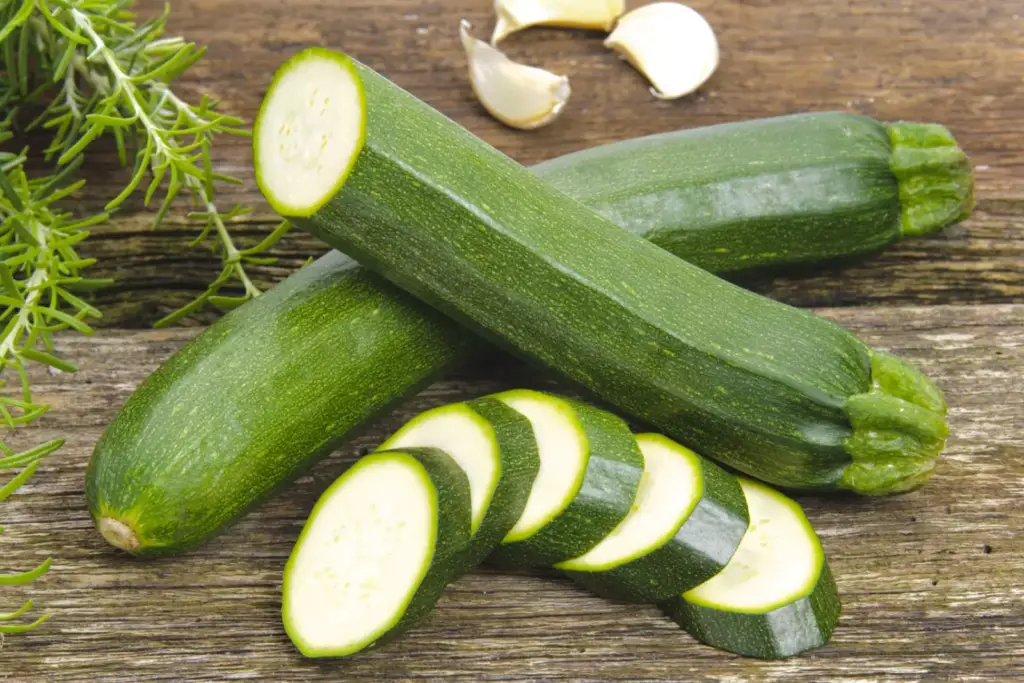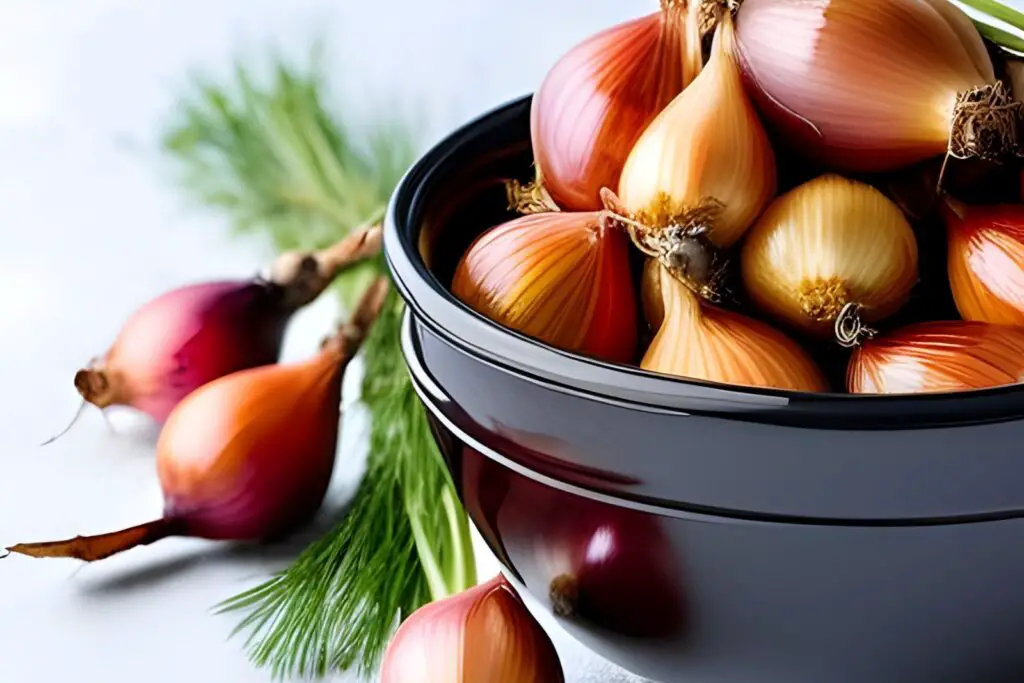
Broccoli is a nutritious and versatile vegetable that adds vibrant color and crunch to a variety of dishes. Whether you have an abundance of fresh broccoli from your garden or bought it in bulk, freezing it can be a great way to preserve its freshness and nutritional value for future use. Freezing broccoli allows you to enjoy its distinct flavor and texture throughout the year, even when it’s out of season. By properly blanching and preparing the broccoli before freezing, you can ensure that it retains its vibrant green color, crispness, and nutritional benefits. Whether you plan to use frozen broccoli in stir-fries, soups, or as a side dish, having a stash of frozen broccoli in your freezer ensures that you always have this versatile vegetable on hand whenever inspiration strikes in the kitchen.
Here are the simple steps to freeze broccoli:
Step 1: Prepare the broccoli
To begin the process of freezing broccoli, it’s important to start with fresh and firm broccoli heads. Choosing high-quality broccoli ensures that you freeze a vegetable with optimal taste and texture. Here’s how you can prepare the broccoli for freezing:
- Select fresh broccoli heads: Look for broccoli heads that have a vibrant green color and firm texture. Avoid broccoli with yellowing florets or soft spots, as they may not freeze well.
- Remove leaves and tough stems: Gently remove any leaves attached to the broccoli heads. These leaves tend to spoil faster and can affect the overall quality of the frozen broccoli. Additionally, trim any tough stems by cutting them off with a knife.
- Separate into florets: Break or cut the broccoli heads into smaller, bite-sized florets. This allows for easier handling and cooking later on. If desired, you can also peel the stalks using a vegetable peeler and chop them into smaller pieces.
By removing the leaves and tough stems and separating the broccoli into florets or chopped stalks, you ensure that each piece freezes uniformly and maintains its quality during the freezing process. Properly preparing the broccoli sets the stage for successful freezing and delicious results when you decide to use it in your meals.
Should I wash broccoli before freezing?
Washing broccoli before freezing is generally recommended to remove any dirt, pesticides, or other contaminants. However, it is important to ensure that the broccoli is thoroughly dried after washing to prevent excess moisture during freezing. Excess moisture can lead to the formation of ice crystals and potentially affect the texture and quality of the frozen broccoli.
Step 2: Blanch the broccoli
Blanching broccoli is a crucial step in the freezing process as it helps preserve the vegetable’s color, texture, and flavor. Blanching involves briefly boiling the broccoli before freezing it. Here’s why blanching is important and how to do it properly:
- Retaining color, texture, and flavor: Blanching helps inactivating enzymes present in the broccoli that can cause the loss of color, texture, and flavor over time. By blanching, you can maintain the appealing vibrant green color of the broccoli and ensure that it retains its crispness and natural taste even after freezing.
- Bring water to a boil: Fill a large pot with water and bring it to a rolling boil. It’s essential to use a pot that is large enough to accommodate the broccoli florets comfortably without overcrowding them.
- Add the broccoli florets: Carefully add the prepared broccoli florets to the boiling water. Ensure that all the florets are submerged in the water for even blanching.
- Boil for 2-3 minutes: Allow the broccoli to boil for approximately 2-3 minutes. This blanching time is sufficient to slightly tenderize the florets and activate the enzymes without overcooking them. Be mindful not to exceed this time to prevent the broccoli from becoming mushy.
- Cool down quickly: Once the blanching time is complete, it’s crucial to stop the cooking process promptly. Remove the broccoli from the boiling water and immediately transfer it to a bowl filled with ice water. The ice water bath helps cool down the broccoli rapidly, preserving its bright green color and crispness.
By blanching the broccoli, you achieve two main objectives: deactivating enzymes that can cause quality deterioration and preserving the visual appeal and texture of the vegetable. It’s important to follow the recommended blanching time to avoid overcooking the broccoli, as overcooked broccoli may become mushy and lose its desirable qualities. Blanching sets the stage for successful freezing, ensuring that your frozen broccoli maintains its quality until it’s time to enjoy it in your favorite dishes.
Can I freeze fresh broccoli without blanching?
While blanching is a recommended step to preserve the quality of fresh broccoli before freezing, it is possible to freeze fresh broccoli without blanching. However, keep in mind that skipping the blanching process may result in changes in texture, flavor, and nutrient loss during freezing. To freeze fresh broccoli without blanching, wash, dry, and cut it into desired portions, then place the raw broccoli directly into freezer bags or containers and freeze immediately.
Step 3: Cool down quickly
After blanching the broccoli, it’s essential to cool it down quickly to halt the cooking process. Cooling the broccoli promptly helps preserve its color, texture, and overall quality. Here’s why and how to cool down the blanched broccoli:
- Halting the cooking process: By transferring the blanched broccoli to an ice water bath, you rapidly lower its temperature, effectively stopping the cooking process. This step is crucial because it helps prevent the broccoli from becoming overcooked and losing its desired texture and nutritional value.
- Draining and transferring to ice water: After boiling the broccoli for the appropriate blanching time, carefully remove the florets from the pot using a slotted spoon or tongs. Allow the excess water to drain off by gently shaking the florets or placing them on a colander. Next, transfer the blanched broccoli immediately to a bowl filled with ice water.
- Complete cooling process: Submerge the blanched broccoli completely in the ice water bath. The ice water rapidly cools down the broccoli, preserving its vibrant green color and crispness. Allow the broccoli to sit in the ice water for a few minutes until it becomes completely cool. This ensures that the heat is extracted from the broccoli quickly, minimizing any further cooking.
Step 4: Drain and dry the broccoli
After cooling the blanched broccoli in the ice water, it’s important to drain and dry it thoroughly before packaging for freezing. Properly draining and drying the broccoli helps prevent the formation of ice crystals, which can lead to freezer burn. Here’s why and how to drain and dry the broccoli:
- Removing excess moisture: When you remove the broccoli from the ice water bath, it will likely retain some water on its surface. Draining the excess moisture is crucial to prevent ice crystals from forming during freezing. Excess moisture can contribute to the degradation of the broccoli’s texture and quality.
- Gently shaking and draining: Carefully lift the blanched broccoli from the ice water bath and gently shake off any excess water. You can also place the broccoli on a colander or sieve to allow the water to drain away.
- Drying with a towel: Once the excess water has drained off, pat the broccoli florets and stalks dry using a clean kitchen towel or paper towels. Gently press the towels against the broccoli to absorb any remaining moisture. Ensure that the broccoli is as dry as possible before proceeding to the next step.
By draining and drying the blanched broccoli, you minimize the moisture content on the surface of the vegetable. This step is crucial to prevent the formation of ice crystals during freezing, which can lead to freezer burn. Freezer burn can negatively impact the texture and flavor of the broccoli, resulting in a less desirable eating experience. Ensuring the broccoli is well-drained and dry helps maintain its quality and freshness throughout its time in the freezer.
Step 5: Package the broccoli
Proper packaging is key to preserving the quality of the frozen broccoli and protecting it from freezer burn. Packaging the broccoli correctly ensures that it maintains its flavor, texture, and nutritional value during its time in the freezer. Here’s how to package the broccoli for optimal freezing:
- Dividing or freezing as a whole: Depending on your needs and preferences, you can choose to divide the blanched broccoli into portion sizes or freeze it as a whole. Dividing the broccoli into portions allows you to easily thaw and use the desired amount without defrosting the entire batch.
- Freezer-safe containers or freezer bags: Place the blanched and dried broccoli into freezer-safe containers or freezer bags. Freezer-safe containers should have a tight-fitting lid to prevent air and moisture from entering. Alternatively, you can use freezer bags made of thick, durable plastic that is specifically designed for freezing.
- Leave headspace for expansion: Whether using containers or bags, ensure that you leave some headspace at the top. This allows the broccoli to expand slightly as it freezes without causing the packaging to burst or crack. Generally, leaving about an inch of headspace is sufficient.
- Remove excess air from freezer bags: If using freezer bags, it’s important to remove as much air as possible before sealing them. Squeeze out the excess air from the bags as you seal them to minimize the potential for freezer burn.
Proper packaging helps protect the broccoli from exposure to air and moisture, which can lead to freezer burn. Freezer burn occurs when the surface of frozen food becomes dehydrated, resulting in dry, discolored patches and a change in flavor. By using appropriate containers or bags and leaving headspace or removing excess air, you create a protective barrier around the broccoli, preserving its quality during freezing.
Step 6: Label and date the package
Labeling and dating each package of frozen broccoli is an essential step in maintaining organization and ensuring that you use the oldest packages first. By clearly marking the date of freezing on the packages, you can easily track the storage time and avoid confusion. Here’s why and how to label and date the packages of frozen broccoli:
- Avoid confusion: When you freeze multiple packages of broccoli or have different batches stored in the freezer, it’s easy to lose track of their age. By labeling each package, you eliminate confusion and ensure that you use the broccoli in the order of its freezing.
- Identify the oldest packages: Frozen broccoli is best consumed within a specific timeframe to maintain its optimal quality. By labeling the date of freezing, you can identify the oldest packages and prioritize their usage. This helps minimize food waste and ensures that you enjoy the freshest broccoli possible.
- Clear and visible labeling: Use a permanent marker or freezer-safe labels to write the date of freezing on each package. Place the label or write directly on the package in a visible and easily readable manner. Include the month, day, and year of freezing.
By labeling and dating the packages of frozen broccoli, you establish an organized system that allows you to keep track of storage time and use the oldest packages first. This practice helps maintain the quality of the broccoli and ensures that you consume it within the recommended timeframe for the best flavor and texture.
Remember to store the labeled packages in a way that allows easy visibility of the labels, making it convenient to identify and retrieve the desired package when needed.
Step 7: Freeze the broccoli
After properly packaging the broccoli, the next step is to store it in the freezer. Freezing the broccoli at the correct temperature and using proper storage techniques are crucial for maintaining its quality. Here’s how to freeze the packaged broccoli effectively:
- Set the freezer temperature: Ensure that your freezer is set at 0°F (-18°C) or below. This temperature is ideal for freezing vegetables and helps preserve their texture, flavor, and nutritional value.
- Freeze in a single layer: When placing the packaged broccoli in the freezer initially, arrange them in a single layer. This allows for faster and more even freezing. Placing the packages in a single layer prevents them from sticking together and helps maintain their individual shape.
- Quick freezing: It is recommended to freeze the broccoli as quickly as possible. Quick freezing helps preserve the quality of the vegetable by minimizing the formation of large ice crystals that can damage the texture and taste. Ensure that there is enough space around each package for proper airflow, allowing for efficient freezing.
- Stack once frozen: Once the broccoli packages are fully frozen, you can stack them to save space in the freezer. Stacking the packages helps optimize storage capacity. However, ensure that the packages are secure and won’t be crushed or damaged by the weight of other items.
By freezing the broccoli at the recommended temperature and initially placing the packages in a single layer, you promote fast and efficient freezing. Quick freezing helps maintain the integrity of the broccoli and prevents the development of large ice crystals, which can negatively impact its quality.
Proper stacking of frozen broccoli packages allows you to make the most of the available freezer space. Just ensure that the packages are fully frozen and secure to prevent any damage.
Other related questions
How long can broccoli last in the freezer?
Broccoli can last in the freezer for up to 8 to 12 months when stored properly. However, for optimal quality, it is recommended to consume frozen broccoli within 6 to 9 months. Beyond this timeframe, the broccoli may still be safe to eat but could experience some loss in texture and flavor.
How do you defrost broccoli?
To defrost broccoli, transfer the frozen broccoli from the freezer to the refrigerator. Allow it to thaw slowly in the refrigerator for several hours or overnight. Once fully thawed, the broccoli can be used in recipes or reheated as desired.
Can you refreeze broccoli?
It is generally safe to refreeze broccoli if it has been thawed properly and not kept at room temperature for an extended period. However, the quality of the broccoli may suffer after being thawed and refrozen, as it can become mushy or lose its texture. It is advisable to consume thawed broccoli promptly to avoid the need for refreezing.
How do I know if the broccoli has gone bad after being frozen?
To determine if frozen broccoli has gone bad, look for signs of freezer burn, such as dry, discolored patches or ice crystals on the surface. Additionally, check for any unusual or off-putting odors that may indicate spoilage. If the broccoli appears significantly damaged, has an unpleasant odor, or has been stored for an extended period beyond the recommended time frame, it is best to discard it to ensure food safety.
Why is my broccoli soggy after freezing?
Sogginess in frozen broccoli can occur due to various factors. One possibility is that the broccoli was not blanched or cooled properly before freezing, leading to excess moisture content. Improper packaging, such as insufficiently sealing the broccoli to prevent moisture loss or freezer burn, can also contribute to sogginess. Lastly, overcooking the broccoli during the blanching process or when reheating it after thawing can result in a mushy texture.
Is frozen broccoli as healthy as fresh broccoli?
Frozen broccoli can be just as healthy as fresh broccoli. The freezing process helps preserve the majority of the nutrients, including vitamins, minerals, and antioxidants found in fresh broccoli. However, there may be slight nutrient loss during freezing and storage, but frozen broccoli remains a nutritious option that offers convenience and availability throughout the year. It is important to choose high-quality frozen broccoli and store it properly to maintain its nutritional value.
Can I freeze cooked broccoli?
Yes, you can freeze cooked broccoli. Freezing cooked broccoli allows you to preserve any leftovers or batch-cooked portions for later use. Before freezing, ensure that the cooked broccoli has cooled down completely. Package it in airtight containers or freezer bags, removing as much air as possible, and label with the date before placing it in the freezer.
Can I freeze broccoli stalks?
Yes, you can freeze broccoli stalks. Before freezing, peel and chop the stalks into desired sizes. Blanch them in boiling water for a brief period, cool them in ice water, and then pat them dry. Finally, package the blanched stalks in freezer-safe containers or bags, ensuring they are tightly sealed, and freeze them for later use.








